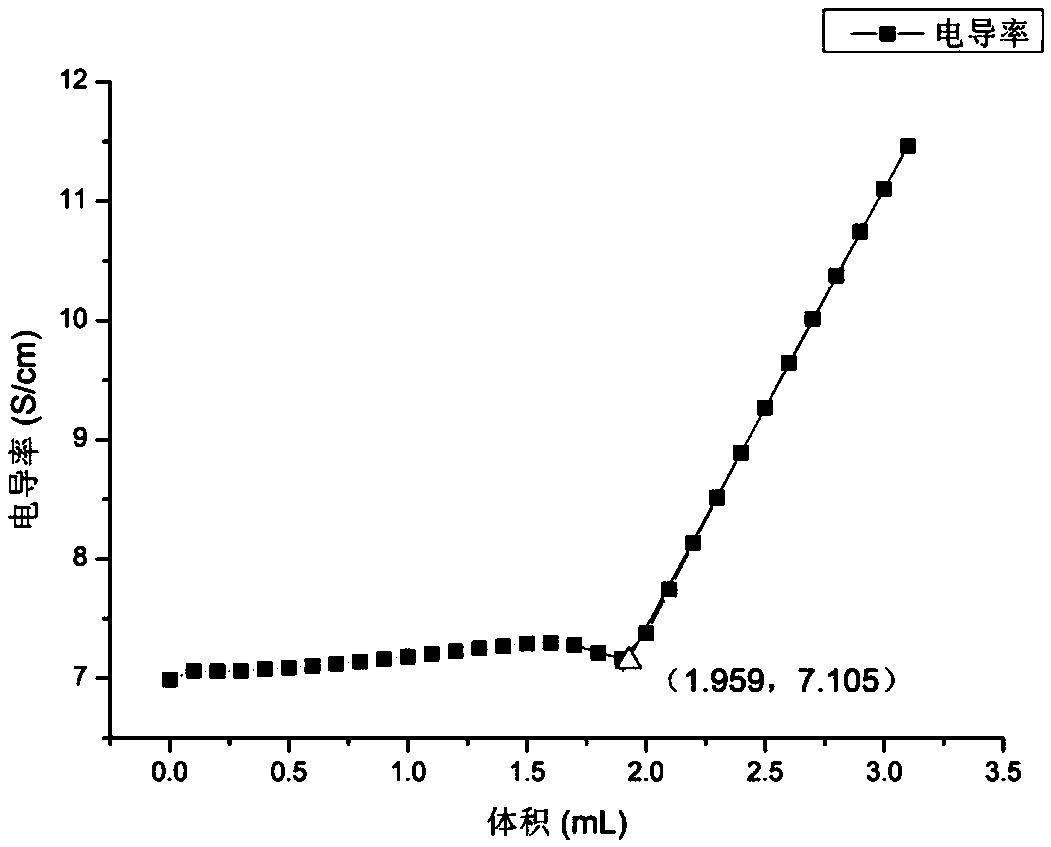Method for detecting sulfate content by conductivity titration
A conductometric titration and sulfate radical technology, applied in the direction of material resistance, can solve problems such as insufficient reproducibility and accuracy, expensive equipment, and high technical requirements for operators, and achieve strong promotion significance, fast detection speed, and repeatability Good results
- Summary
- Abstract
- Description
- Claims
- Application Information
AI Technical Summary
Problems solved by technology
Method used
Image
Examples
Embodiment Construction
[0040] The present invention will be further described in detail below in conjunction with specific embodiments, which are explanations of the present invention rather than limitations.
[0041] The invention discloses a method for detecting sulfate radical content by conductometric titration, which is based on the measurement principle of conductometric titration, taking fly ash as an example. First, the sulfate in the fly ash is dissolved in deionized water, and an excessive amount of barium chloride standard solution is added to the obtained aqueous solution sample, and the sulfate radical in the sample reacts with the excess barium ion to form a barium sulfate precipitate; then use Soluble sulfate titration Alcohol organic solvent as dispersant and hydrochloric acid or nitric acid acidify the remaining barium ions in the sample solution, with the continuous increase of soluble sulfate, the cations of soluble sulfate in the solution are also increasing, barium Ions and sulfat...
PUM
 Login to View More
Login to View More Abstract
Description
Claims
Application Information
 Login to View More
Login to View More - R&D
- Intellectual Property
- Life Sciences
- Materials
- Tech Scout
- Unparalleled Data Quality
- Higher Quality Content
- 60% Fewer Hallucinations
Browse by: Latest US Patents, China's latest patents, Technical Efficacy Thesaurus, Application Domain, Technology Topic, Popular Technical Reports.
© 2025 PatSnap. All rights reserved.Legal|Privacy policy|Modern Slavery Act Transparency Statement|Sitemap|About US| Contact US: help@patsnap.com


